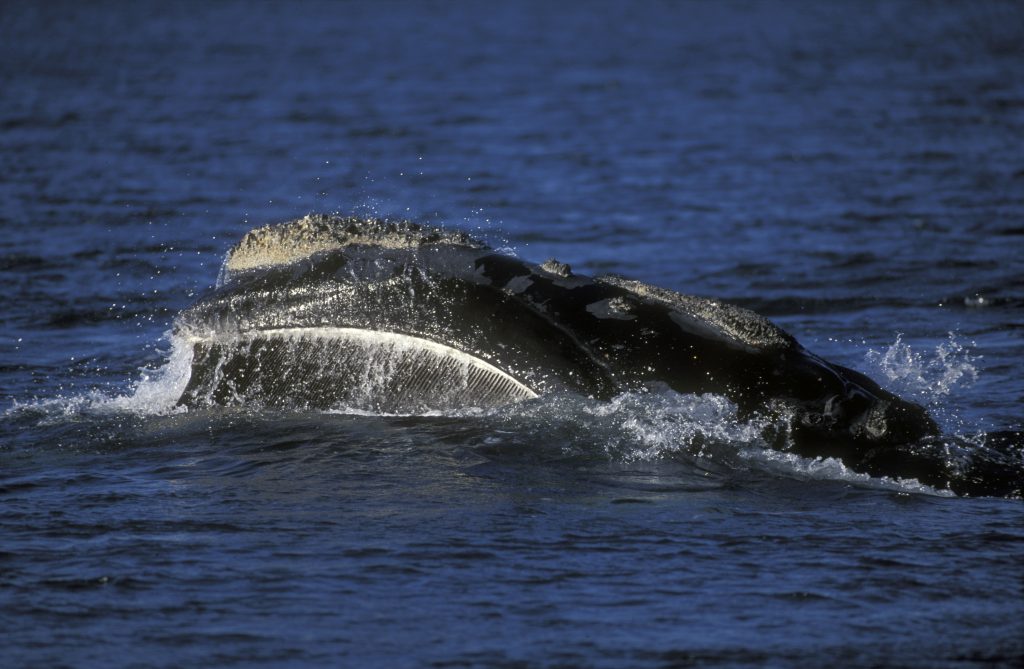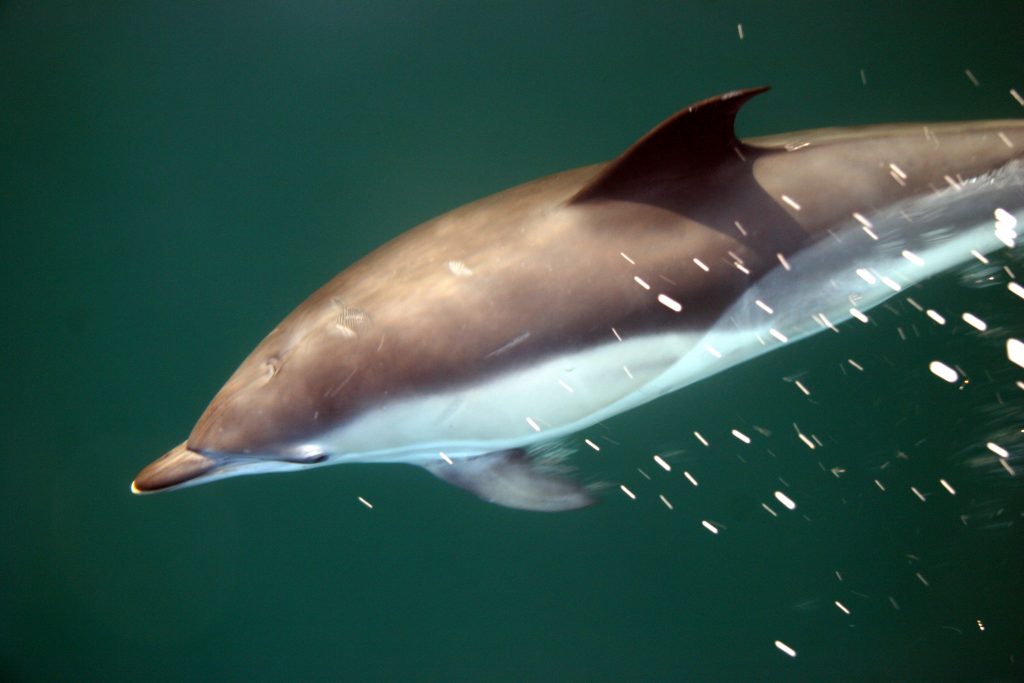As part of our membership scheme we produce monthly bulletins and quarterly magazines to keep our members up to date with the latest conservation news, sightings and our research. In December’s SeaWatcher magazine, our Director, Peter rounded up some conservation news stories from 2022 including greatest concerns, signs of progress, and some successes.
Endangered species
The world’s most endangered cetacean (if we assume the Baiji or Chinese river dolphin to be extinct now) is the vaquita, a porpoise that inhabits the upper Gulf of California. The first attempt at a precise estimate of abundance was in 1997, and indicated a population of 567 (95% confidence limits 177-1073). Over the next decade, the species declined to an estimated 245 animals (95% confidence limits 68-884) by 2008. A third survey indicated a further serious decline to an estimated 59 animals (95% confidence limits 22-145). The cause of these sustained declines in recent years was entanglement in fishing gear, notably gillnets often set illegally, and in 2018 it was estimated that fewer than 20 remained.
Since then, scientists have observed 7-15 in 2019 and 5013 in 2021. Encouragingly, in both seasons, calves were sighted among the adults, and there were some signs that animals were learning to avoid entanglement in gillnets, whilst since 2015, 1000 pieces of fishing gear have been removed from the Vaquita UNESCO Reserve set up to protect the species’ last refuge.
Another critically endangered species is the North Atlantic right whale. In 2021, there were thought to be 483 individuals. There are now believed to be fewer than 350 whales remaining, almost all occurring off the north-east coast of the United States up to eastern Canada, with very few sightings in the north-east Atlantic. Within this population are fewer than 100 breeding females, and since 2017, there has been an average of only 24 calves born in a year (and only 15 in 2022). Over the last five years, the population has experienced at least 92 documented deaths, serious or sub-lethal injuries or illnesses. Of 34 deaths, 13 were of unknown causes, 11 were vessel strikes, nine were the result of fishing gear entanglements, and one was a perinatal death. Nineteen showed serious injuries due to entanglement and two were vessel strikes. By October, during 2022 there had been five whales entangled and seen with fishing gear attached, and at least five others known to have interacted with fishing gear, having entanglement injuries significant enough to cause wounds and scars. There was only one detected vessel strike to a right whale in this year.
Collaborative efforts to reduce the lethal and sub-lethal impacts of human-caused threats to North Atlantic right whales and save the species from extinction have involved conservationists, scientists, government agencies, and the fishing and shipping industries. The North Atlantic Right Whale Consortium was founded in 1986 by the New England Aquarium, the University of Rhode Island, the Center of Coastal Studies, Marineland of Florida, and Woods Hole Oceanographic Institution to jointly assess the biology and status of right whales. Despite all those efforts, the species appears to continue to decline, threatened mainly be entanglement in fishing gear and ship strikes, although climate change may also be having an indirect effect by causing whales to shift their feeding grounds to new areas where they face further pressures.
Threats to cetaceans
Fisheries bycatch continues to be the most obvious threat faced by cetaceans globally. This is also the case in Europe. Genetically distinct populations of harbour porpoise in the Baltic and around the Iberian Peninsula suffer mortality from entanglement in gillnets, trawls or purse seines. Emergency measures were proposed by the European Commission to reduce porpoise bycatch in the Baltic Proper. These included having some areas closed to fishing whilst, everywhere, static nets were to have pingers installed that would alert porpoises to the presence of the net. Pingers have proven to be very effective at reducing porpoise entanglement in gillnets elsewhere. However, these important conservation efforts have stalled as some of the navies operating in those waters have insisted that the pingers interfere with their ability to detect submarines using active sonar since their sonar frequencies overlap.
In the Bay of Biscay and around the Atlantic coasts of Spain and Portugal, common dolphins are dying in fishing gear in their thousands. Between 2019 and 2021, the average annual mortality of the species from bycatch is estimated to be between 6000-9000 individuals and could be even higher. A variety of fishing gear have been identified as responsible: static gillnets particularly trammel nets, midwater and bottom trawls, purse seine nets, even long-lines. Earlier, the European Comission contracted Sea Watch Foundation to prepare risk maps that showed when and where particular types of fishing gear were likely to overlap with higher densities of common dolphins (and other species) so that they could push for governments to target those areas at highest risk for actions to reduce the chances of mortality.
Preliminary trials over the last couple of years in France, Spain and Portugal have shown that adaptations to pingers previously used largely on porpoises in gillnets can be very effective also at reducing bycatch in common dolphins, and even in other gears such as trawls and purse seines. This could make a significant difference to tackling a serious conservation problem that has persisted for several years. More trials are needed and it is important that recommended measures are strictly applied for them to be effective, but the indications are promising.
Future targets for our oceans
Between 7-19th December the United Nations held a biodiversity summit conference (COP15) in Montreal, Canada. Almost 200 countries backed a call to protect 30% of the planet by 2030. Currently 17% of the world’s terrestrial and 10% of marine areas are protected. The coastal seas and oceans were considered throughout the conference and were incorporated in many of the targets, although inevitably the focus tended to be upon the terrestrial environment.
Conferences such as these are important at getting countries to commit to actions. However, the extent to which they achieve their objectives is down to implementation and how effective those actions are. At the request of the European Commission, this year Sea Watch Foundation has been working with three other organisations (two from Spain and one from Germany) on a project to help countries in Europe to assess the effectiveness of management of marine protected areas. Although the UK is no longer within the EU and so could not directly benefit from this study, we were asked by the UK Joint Nature Conservation Committee if we could share the approach adopted and its findings
The word ‘effective’ is key to proposed protection measures. It is all very well designating a part of the sea, a marine protected area, but if human activities continue to occur and impact negatively upon the animal populations living within it, then it may not be achieving the conservation goals.
Thanks for those reviews Peter! If you would like to find out more about the world of marine science and what is happening, why not consider becoming a Sea Watch Member to receive monthly and quarterly updates from us.
Katie Baker Communication and Outreach Officer


























